
 Valerie Laws is a crime novelist and artist who received an Arts Council grant to spray paint poetry onto live sheep to create over 80 billion poems, to celebrate the principles of quantum theory, and was the subject of a media frenzy as a result. Her novel The Rotting Spot is a crime novel about skull hunting. She is Writer in Residence at a Pathology Museum in London.
Valerie Laws is a crime novelist and artist who received an Arts Council grant to spray paint poetry onto live sheep to create over 80 billion poems, to celebrate the principles of quantum theory, and was the subject of a media frenzy as a result. Her novel The Rotting Spot is a crime novel about skull hunting. She is Writer in Residence at a Pathology Museum in London.
Valerie met me at The Slaughterhouse where we talked about William Blake and British Art.
Do you think everyone’s little bit pathological?
To borrow an old joke, everyone except you and me, and I’m not too sure about you! It’s one of the reasons crime fiction is so enduringly popular and fascinating to so many readers: murder is the worst crime, and yet it can be committed by someone who isn’t a ‘criminal’ if the pressure, temptation or motivation is strong enough. This is the kind of crime fiction I like best as reader and writer, where the characters aren’t gangsters or drug lords whose business includes killing, but people who could have lived fairly blameless or at least outwardly respectable lives and then something makes them cross that line. Become a ‘murderer’, forever marked as outside human society. It’s also the crime that can’t be put right, at least not for the victim or their family. Irrevocable.
What is or isn’t pathological, or ‘normal’ varies from person to person so it’s easy to judge another person as weird or pathological. Some of my interests and activities could seem that way to others and have attracted those kinds of comments. Anyone seeing me on the beach hacking the head off a big dead and rotting bird and taking it home with me might well think I’ve got something dark going on! I rot them down in the garden and then boil in bleach and there you have a skull for your collection. They are beautiful things, as are live birds and animals, and I think it’s wonderful that something beautiful survives death. Not really morbid at all – though anyone looking at the skulls, stuffed birds, human spine, and similar relics in my house might think otherwise! Similarly, my reaction to witnessing the deaths of my parents within a shortish time was to become Writer in Residence at a Pathology Museum in London, and a University brain institute in Newcastle, with access to human specimens, human dissection sessions, human brains… that might seem morbid or strange, to spend several years working with top scientists to learn the science of dying, dementia, brain function and malfunction. This work and interest has fed into my crime fiction and my science-themed poetry too. It’s just I have a powerful urge to know all about things and why they happen, it’s the scientist side of me, and that’s how I deal with things like the great mystery of death, and the loss of loved ones. So perhaps yes we are all a bit pathological in different ways, on the other hand we’d need to know why someone does things to understand how normal their behaviour is.
William Blake features in your writing. Do you think his poetry celebrates the physical or tries to transcend it?
I think he does both. Blake, considered mad in his own time, believed that a true poet was a prophet, and he was. His writings contain many truths and ideas scientists of many disciplines and psychologists came up with many years later. I first loved Blake as a teenager, because I loved the revolutionary ideas in his work. He railed against the restrictions and suppressions of free thought by the established churches. He praised instinct, freedom and respect for nature. He believed the destructive power of the state and churches together ruined human relationships, making people feel guilty about natural feelings, and that the growing power of ‘reason’ led to industrial wastelands, environments which put money and power above human beings: the ‘dark satanic mills’ of ‘Jerusalem’. He believed that suppressing human instinct, emotion and sexuality warped and poisoned them. Much of this emerged later on as psychology and psychiatry developed.
My favourite quotation from Blake is this: ‘How do we know but ev’ry bird that cuts the airy way, is an immense world of delight, closed by your senses five.’ This is an amazing piece of prophecy and insight. Blake was able to imagine back then that our five senses perhaps only perceive part of reality, there might be a great deal more – this, centuries before scientists seriously posited the existence of multiple dimensions of reality. (Of course people believed in invisible ghosts, angels, spirits etc, but Blake was saying something we CAN see might be just the part of it our senses can perceive.) Yet amid his prophetic sayings and poems, there are many simpler poems which celebrate nature, in all its forms. He also rails against cruelty of any kind, sometimes protesting at horrible practices of his time such as selling little children into what was slavery and hideous suffering under the control of men who sent them up chimneys to sweep them.  The children didn’t live long. Respectable rich people happily let this go on in their own houses. Blake was years ahead of his time. I appreciate him even more now, as I have degrees in both English, and in Maths/Theoretical Physics, and can more clearly see how he ‘knew’ scientific truths before scientists did.
The children didn’t live long. Respectable rich people happily let this go on in their own houses. Blake was years ahead of his time. I appreciate him even more now, as I have degrees in both English, and in Maths/Theoretical Physics, and can more clearly see how he ‘knew’ scientific truths before scientists did.
I use Blake’s symbolism in my crime novel THE ROTTING SPOT partly because my protagonist Erica Bruce is a version of aspects of me and she too loves his work. But also because what he said applies to crime fiction. Murder, abuse, dark secrets, caused by past cruelty or indifference. He said a lot about the danger of suppressing true feelings or emotions, causing terrible warped feelings to grow. These are just the kind of emotional pressure cooker situations that result in murder!
How would you explain to the layman Blake’s line: ‘sooner murder an infant in its cradle than nurse unacted desires’?
Ah yes, this one is involved in the plot of the novel, and Erica’s thinking at a crucial point. It’s a great example of Blake’s insight. At first glance, it’s shocking – taken out of context, it looks as if he’s saying act out your desires regardless of what they are, killing a baby is worse than not doing what you want. I don’t believe that is what it means. Blake’s work is all humanitarian, and his concern for children’s feelings and well-being is unusual for his times. But he asserts elsewhere the danger of unacted and un-dealt-with powerful emotions. For example, anger expressed, he says, goes away. Anger kept inside, brooded over, fed by negative emotions, grows into a massively destructive force, a ‘poison tree’. He’s not saying it’s ok to murder infants, he’s saying feeding (‘nursing’ in its meaning of breastfeeding, nurturing) unacted desires leads to something even worse than that. Nowadays we have examples of people who’ve brooded over wrongs real and imagined, obsessing over being mocked or frustrated, suddenly going on the rampage with guns and killing people at random. Our desires should be acted on, if appropriate, or dealt with in some way – acknowledged, talked about, shared, not ‘watered’ as if they were seeds within us until they grow into something monstrous. That very ‘nursing’ of resentment, jealousy, hatred, is exactly what can lead to murder, and is often behind a killer’s motive in crime fiction.
How would you elevator pitch The Rotting Spot to someone with a morbid fear of skulls?
We read crime fiction largely to enjoy fear at one remove – most of us would be scared of being murdered! The same applies to skulls in your case. But also you’ll learn a lot about them, which may give you another viewpoint – empathy for the person whose thoughts lived in it, appreciation for the beautiful architecture of the brain’s house.
What has pathology taught you about human behaviour?
It’s taught me more about human anatomy and its wonders. But also a lot about attitudes and how people cope with adversity. My studies of brain dysfunction such as dementia led me to spend time with dementia patients as well as scientists, listening to them talk and writing for them, for a book Newcastle University published challenging ageism (CHANGING AGE, CHANGING MINDS). I’ve learned about ageism and stereotyping and how wrong it is. I’ve worked with older people in their nineties, independent, using computers, funny and creative, sharp as needles. There are far more of them than people think. But even those with advanced dementia have a great deal more awareness and intelligence than people generally give them credit for. People tend to make assumptions and then inflict those assumptions on other people without bothering to actually look and listen to find out the truth. Spending time in a pathology museum and human dissection classes is fascinating too. Not just because of the bodies, but the young medical students, who nowadays are being encouraged to retain empathy with the dead instead of making themselves callous and cold. This older tendency has led to a lot of distress caused by doctors and surgeons who don’t see patients as people at all. I’ve had personal experience of this as someone disabled in a car crash but also heard a lot of stories. Much of this crops up in my crime fiction! For example a character with dementia could say something really important and nobody would take any notice, assuming they are talking rubbish! Cruelty is sometimes sadistic and sometimes the result of being unable to connect: these can lead to murder or be involved in motivations for murder. I’ve spent time with a Home Office Pathologist looking at a lot of death scene photographs and discussing them which has taught me there are a lot of lonely people dying sad unnecessary deaths out there through alcoholism and similar causes. There are bizarre suicides and horrific murders in real life. I also have encountered great courage and warm positive attitudes in people who have had terrible tragic lives yet have come through with endurance and determination. I have allowed myself to connect emotionally with not only living people I’ve met through these studies but also with the specimens. I’ve written about them, poems and a BBC radio play, and I connect with them as people, including cadavers in dissection and dead babies with extreme syndromes which are in jars in the museum. So I don’t see them as ‘grisly’ but as people with personalities who deserve respect. The same applies to murder victims in fiction.
What are you working on at the moment?
I’ve just completed a new crime novel so will be finding a new agent to explore publication options, always now being aware that there is e-publishing of course! I’m touring giving readings and performances from my newest poetry book ALL THAT LIVES, and also from my crime novel THE ROTTING SPOT, at various literature festivals and events, which I love doing! I’m working on new poems too several of which are newly published in or will soon be published in, anthologies. I’m giving writing workshops at my residency in the Physic Herb Garden, for poetry and for crime fiction (poisonous plants!) and continuing to explore new avenues of research. I shall be promoting and marketing my two ebooks, The Rotting Spot crime novel and my historical comedy LYDIA BENNET’S BLOG. Ideas for the next crime novel are taking shape… I always have lots of projects on the go at any one time!
Do you think Damien Hirst has been a good or a bad thing for British Art?
Well as someone who received an Arts Council grant to spray paint poetry onto live sheep to create over 80 billion poems, to celebrate the principles of quantum theory, and was the subject of a media frenzy as a result, I suppose I’m in no position to huff and puff about non-representational contemporary art! I believe Banksy stencilled symbols on sheep but I think I got there first with my QUANTUM SHEEP which invented a whole new form of poetry, the quantum haiku, into the bargain! I’m all for people pushing boundaries in the arts, and conceptual art is an important movement for that. There has been a partial movement back toward representational, (shout-out here for the sublime George Shaw, genius), but even that strand has been changed in various subtle ways by Hirst and friends. Of course the prices paid for a few shells on a shelf or such like are unbelievable but nobody forced them to buy the works. Some conceptual art is playful and exciting and some is pretentious dreck, but that doesn’t matter. Of course Hirst used dead critters like sharks but then still life artists for centuries painted shot stags and bleeding pheasants, so it’s quite traditional really. Generally I think he’s been a good thing regardless of whether you like his stuff or not.
Marshall McLuhan said “the medium is the message”. How important do you think framing and context are in visual art as well as fiction?
In both cases the medium is a large part of the message, in fact it’s impossible to ‘see the join’. However this near-identity is a natural process in literature as well as visual art of all genres: certainly for me, ideas for poems, crime or comedy novels, plays, come along and bring their medium with them rather than it being a conscious choice. I imagine this works for other creative artists too. My crime plots also explore themes like, for example in THE ROTTING SPOT, what happens if someone is getting away with murder, what does that do to them and their surroundings and society? Or relationship tensions between siblings, lovers, friends. My plays celebrate local historical characters who have been neglected by history, my poetry explores death, sex, pathology, and the mathematics of quantum theory using the medium of live sheep. In all cases the context and the form naturally arises. I suppose the medium is the form of delivering the message effectively, in the way that I can write about pure science in creative fictional or poetic terms to make it accessible to a wider audience than the specialist one originally served. In visual art too the forms change with the times as do the preoccupations, now we have photography and graphic art, the skill of creating an accurate representation is not so vital, so it’s concepts and ideas being explored through arresting or surprising forms or media. Oscar Wilde, whose house I visited yesterday in Dublin (sadly he was out) said ‘Style, not sincerity’ is the essential in all art, and this shocking statement (at the time, when the ‘moral’ was supposed to be paramount) is really saying much the same as McLuhan.
How would you like to be remembered?
I’d like to be remembered by readers as a writer who made someone laugh or cry, or feel something or understand something in a new way: with all my work, including genre fiction like THE ROTTING SPOT, I like to get the language right as well as plot and pace. I’d like to be remembered by my children and friends as someone who was there for them as support and help: and by my boyfriend as hot!
Do you think death is the end or a transformation of energy as physics seems to postulate?
I don’t know. I’ve seen people die, and I’ve learned a lot from pathologists and neuroscientists. I’ve learned how each brain cell dies and how the body dies. I’ve done a lot of research on NDEs (Near Death Experiences) and co-authored an article with Professor Elaine Perry in Neuroquantology about them. I’ve had experiences of a supernatural kind and so have many other people I’ve met. On the other hand, the brain plays tricks and wishful thinking is very powerful. I’d like scientists to seriously study the possibility of survival after death, which I feel would require the possibility of consciousness outside the physical brain, as in NDEs or out of body experiences. It’s very hard to find any cases which stand up to any scrutiny and during researches I found that scientists, who are kidding themselves if they claim to be impartial observers, tend to be either close-mindedly sceptical, or so wishful that they accept dubious reports or worse, change reports to make them seem more convincing. Quantum physics has changed our view of the universe, and so many strange things happen that disembodied consciousness seems not so weird. So while the physical body may well stick to the old Newtonian style ‘transformation of energy, matter not created nor destroyed’ schtick, consciousness might be able to go on and evolve. Or not! It’s part of the endless fascination of death, and at least we will all find out in the end. And if there is nothing, we won’t know we don’t know!
Thank you Valerie for giving a refreshing and insightful interview.
Links:
Find Valerie at her website, on Twitter, Facebook, and her blog.
Her crime novel THE ROTTING SPOT: on Amazon UK 99p & Amazon US $1.55 or paperback via Amazon or from the publisher, Red Squirrel Press or via her website, signed.
Valerie’s science poetry book on pathology, sex and death, ALL THAT LIVES: contact her via website or via Red Squirrel Press.
Her historical comedy novel LYDIA BENNET’S BLOG is also on Amazon UK for 98p and Amazon US for $1.55
Any requests re performances, festival and events appearances and signings, contact Valerie via website, as she is between agents.

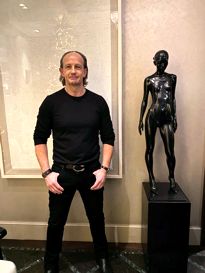
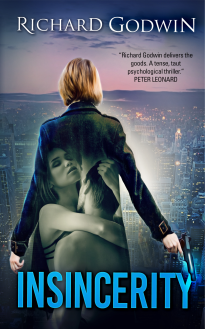
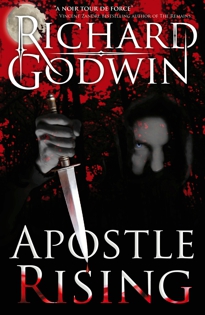
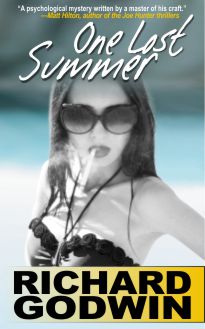
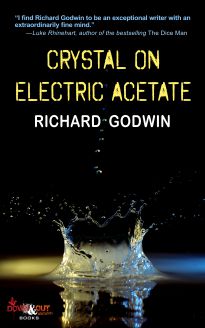
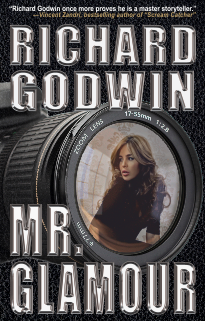
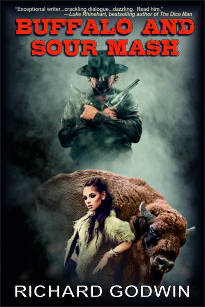
4 Responses to Chin Wag At The Slaughterhouse: Interview With Valerie Laws